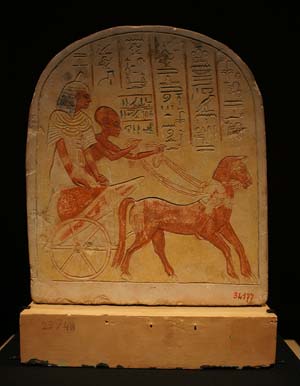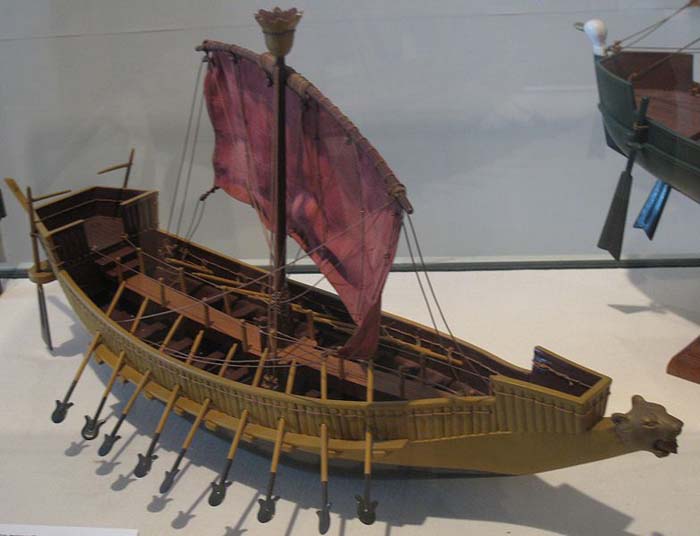Second Intermediate Period (1650 – 1550 BC)
For much of this time, Egypt was under the control of the Hyksos, a Canaanite tribe from the north-east. They sacked Memphis which was then the capital and seized control of the country. Many Egyptians fled to Thebes where they eventually organized a resistance.
The Hyksos had a major influence on the Egyptian military because of their advanced technology. They used chariots and composite bows, and the Egyptian soldiers soon adopted these for their own use. The composite bow was a superior weapon to the single-arched bow, for it provided greater accuracy and could kill from a greater distance.
The ancient Egyptian army organization developed a lot during the battles against the Hyksos. It gained a more definite hierarchy with the Pharaoh serving as the commander-in chief. At the bottom were common soldiers, with the lowest-ranking commander being in charge of 50 men.
Above that commander was one who was responsible for 250 men. He reported to a captain who then reported to a troop commander. The garrison troops overseer ran an entire garrison. He commanded the troop commanders and their men and reported to an overseer who commanded all of the forts. The overseer reported to a lieutenant commander who reported to a general. The generals reported to the Pharaoh.
The New Kingdom (1550 – 1069 BC)

© Tjflex2 – Relief of a Chariot
The first Egyptian chariots were introduced during the beginning of the 18th Dynasty at the start of the New Kingdom. The Egyptians gradually improved their chariots, making them faster and lighter.
Egyptian war chariots typically carried two people: the driver who controlled the chariot and a warrior. The latter typically used a bow and arrows. When he ran out of arrows, he would use a short spear.
Charioteers sometimes wore scale armor, but many carried shields or wore leather bands across their chests. Charioteers generally only wore armor that protected their upper bodies, for the chariots themselves protected their lower bodies. Unlike most other soldiers, charioteers generally came from the upper class.
The scale armor was first seen during the 19th Dynasty (1292 – 1189 BC). Another innovation seen in the New Kingdom was the khopesh, a type of sword. It was somewhat sickle-shaped and had evolved from battle axes.
By the time of the New Kingdom, the Egyptian military had three main branches: infantry, navy and chariotry.

© Deror avi – Warship Model (based on an Egyptian ship from the reign of Ramses III)
Third Intermediate Period (1069 – 664 BC)
The Third Intermediate Period began with the death of Ramses XI. Towards the end, Assyria arose as the feared enemy power. Assyrians were noted for their use of iron weaponry. Forging ironcalled for using charcoal which, in turn, called for using lumber. Assyria had far more trees than did Egypt, so they had the advantage in this matter. That proved to be a major problem when Assyria invaded Egypt in 670 BC.
Late Period (664 – 332 BC)
The major innovations seen during the Late Period were mounted troops (cavalry) and weapons made of iron.
The phrase “late period” refers to the fact that this was the last period in which Egypt was ruled by native Egyptians. The Ptolemaic dynasty, which ruled from 305 BC to 31 BC, had originally come
















































